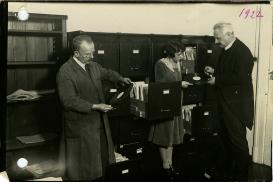The term “applied humanities” first appeared in the 1950s, when cybernetics and then the postwar reform of school and university education prompted the development of new, interdisciplinary programs with novel funding models. But the question of the humanities’ applicability appeared on the disciplinary horizon long before certain subject fields exchanged the primacy of logic and history (disciplines ending with “-ology” and “history”) for phenomenological contemplation or practice (disciplines ending with “studies,” or in French “études”). Almost all humanities disciplines emerged in the course of the “long modern” period (from ca. 1500) out of fields of practical knowledge; examples are literary studies, history, law, and art history. Far from losing sight of their fields of application, such disciplines have constantly updated them by means of connoisseurship, judgment, and knowledge of the canon.
“Historicizing the Applied Humanities” addresses the techniques in the humanities that led to the emergence and reorientation of new disciplines in the long modern period. They include conserving and archiving, criticizing and comparing, interpreting and recording, recasting and translating. What relationships exist between humanities knowledge and infrastructural measures, the advent of new research materials, objects, and technologies? What are the dynamics between the fields of humanities knowledge and processes of academicization or political appropriation? And what justifications do the arts, industry, and currently the smart economy attribute to humanities-based knowledge?

